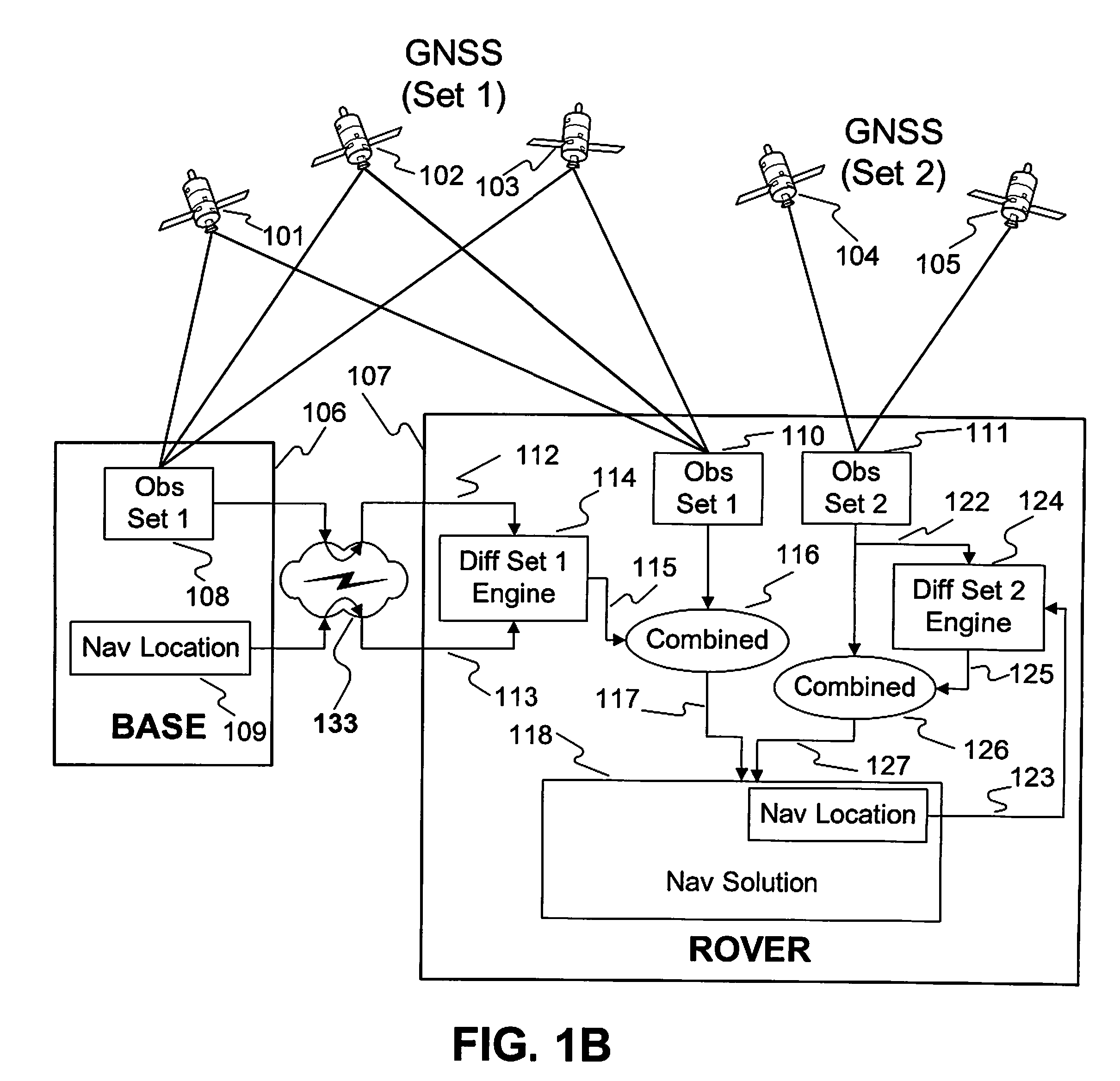System and method for augmenting dgnss with internally-generated differential correction
a technology of internal-generated differential correction and system, applied in the field of processing signals, can solve the problems of inability to use all signals available for lack of appropriate matching pairs of observations, large error sources when employing single-difference techniques, and inability to use all signals available, etc., to achieve suitable performance and increase weighting
- Summary
- Abstract
- Description
- Claims
- Application Information
AI Technical Summary
Benefits of technology
Problems solved by technology
Method used
Image
Examples
Embodiment Construction
[0039]In the most common form, Differential GNSS (DGNSS) requires two GNSS receivers, a rover and a base receiver. The base is typically stationary at a known location and sends to a rover GNSS receiver phase (or pseudo-range) observations plus its known location, or in lieu of this, differential correctors or other differential enabling data. The rover takes the data from the base, and uses it to correct its own observations to increase their accuracy. The result is that the rover can provide a more accurate location using corrected observations, even to the centimeter level or less when carrier phase is used in an RTK solution.
[0040]FIG. 1A shows the details of a typical DGNSS scenario with two sets of satellites involved. The sets could be from different GNSS constellations such as GPS and GLONASS, or simply one set that is observable to both receivers while the other set is observable only to the rover. As shown in FIG. 1A, satellite Set 1 is comprised of satellites 101, 102, an...
PUM
 Login to View More
Login to View More Abstract
Description
Claims
Application Information
 Login to View More
Login to View More - R&D
- Intellectual Property
- Life Sciences
- Materials
- Tech Scout
- Unparalleled Data Quality
- Higher Quality Content
- 60% Fewer Hallucinations
Browse by: Latest US Patents, China's latest patents, Technical Efficacy Thesaurus, Application Domain, Technology Topic, Popular Technical Reports.
© 2025 PatSnap. All rights reserved.Legal|Privacy policy|Modern Slavery Act Transparency Statement|Sitemap|About US| Contact US: help@patsnap.com



